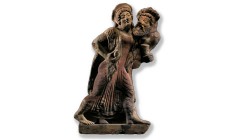All
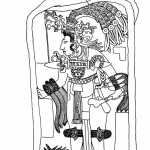
Aguas Calientes Stela 1
A Maya sculpture, stolen in the 1960s, that is currently missing Aguas Calientes is a Classic Maya site located in the Petén Department of Guatemala. The site was first recorded by archaeologist Sylvanus Moreley who visited it in April and May of 1914. At that time Morley located the site’s first (and, so far, only) known Stela 1, which was referred to locally as “El Rey”
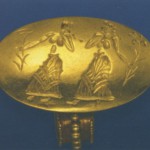
Aidonia Treasure
The Aidonia Treasure is a collection of Mycenaean gold and jewelry returned to Greece in 1996 and thought to have been robbed from a cemetery at Aidonia in the late 1970s.

Antonine Wall
One of the few places in Scotland where unauthorised metal detecting has been recorded to have taken place is on the Antonine Wall.
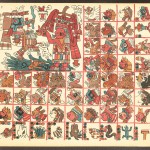
Aubin Tonalamatl
A Nahuatl Codex legally exported from Mexico to France in the 19th century and stolen from the Bibliothèque National in 1982...
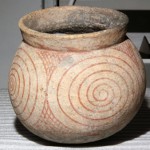
Ban Chiang
Ban Chiang is a badly looted archaeological site in north-east Thailand.
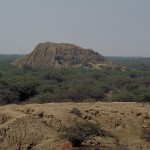
Batán Grande
Sicán/Lambayeque cultural site systematically looted from the early 20th century to the present.
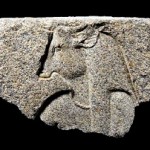
Behbeit el-Hagar temple reliefs
In 2004 a piece of temple relief was returned to Egypt from Christie’s New York...
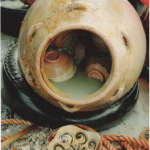
Belitung Shipwreck
Ninth century CE Arab dhow shipwreck off the coast of Indonesia, commercially salvaged in 1998 and criticized by Western academics after a proposed exhibition of the shipwreck by the Smithsonian’s Sackler Gallery in 2011.
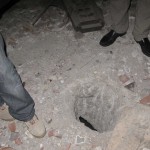
Benghazi Treasure
The so-called Benghazi Treasure is a group of antiquities that was excavated in Cyrenaica after the First World War during the Italian occupation of Libya (Bailey 2011).
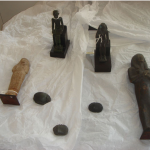
Bijbels Museum theft
Egyptian artefacts stolen from the Bijbels Museum in Amsterdam and returned by Christie’s New York...
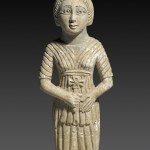
Brooklyn Museum and Fake Coptic Art
Brooklyn Museum was considered to have one of the largest and most significant collections of Coptic Art in the world, until serious doubts were raised over the authenticity of many of the pieces.
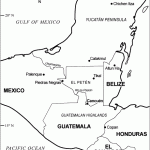
Cancuén
Cancuén is a major Classic Maya site in northern Guatemala which has experienced several looting events from the 1960s into the 2000s.
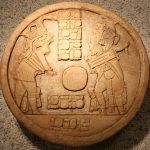
Cancuén Ballcourt Marker
Classic Maya stone sculpture from the site of Cancuén, Guatemala; looted in 2001 and recovered in 2003. Note: the piece was sometimes referred to as an ‘altar’ in the press.
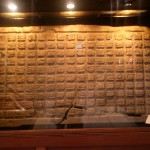
Cancuén Panel
Classic Maya hieroglyphic panel looted from the site of Cancuén, Guatemala sometime before 1981.
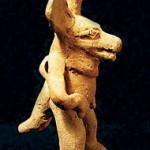
Cara Sucia
Cara Sucia is a Salvadoran archaeological site which experienced several major episodes of looting. These inspired the United States to enter into both its first UNESCO Convention-based emergency import restrictions and its first UNESCO Convention-based cultural property bilateral agreement.
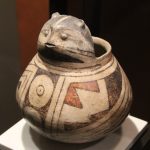
Casas Grandes Artefacts Returned to Mexico from the US in 1997
Artefacts offered to undercover US federal agents by a man who claimed to have looted them from a Mexican cave.
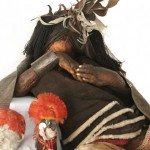
Cerro El Plomo Child
The first high-altitude frozen mummy found in Chile. It was located and then hidden by looters who eventually sold it to the government.
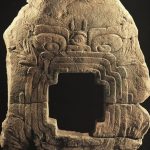
Chalcatzingo Monument 9
An Olmec Monument that was looted from Mexico and returned by the United States in 2023.

Cleveland Museum of Art Returns to Italy (2008)
Artefacts returned to Italy in 2008 after Italian investigations into illicit trading.
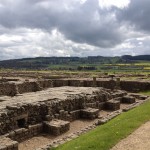
Corbridge
Corbridge has one of the most documented histories of instances of nighthawking in the United Kingdom.
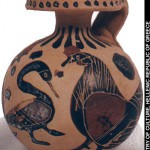
Corinth Museum Theft 1990
In 1990 thieves stole more than 270 artifacts from the museum of the Corinth excavations in Greece. Several pieces were recovered from Christie’s New York in the late 1990s, while most of the remainder were discovered in Miami in 1999.

Coroma Textiles
Pre- and post-Conquest Aymara sacred textiles removed from the village of Coroma in the 1970s and 1980s in violation of Bolivian law.
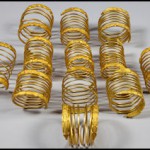
Dacian Gold Bracelets
Five hoards of solid gold bracelets looted from the site of Sarmizegetusa Regia, Romania, and partially recovered from the USA and other countries in Europe.
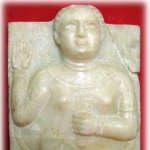
Dat-Hamin Stele
Stolen South Arabian stela returned to Yemen by Phoenix Ancient Art in 2004...

Derrynaflan Hoard
One of the most spectacular hoard discoveries in Ireland, which led first to an increase in enthusiasm for metal detecting as a hobby, but ultimately contributed to the prohibition of unlicensed searching for archaeological material.
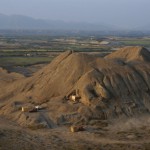
Dos Cabezas
Dos Cabezas is a Moche cultural site on Peru’s north coast that was the site of a major tomb looting event in the 1970s or 1980s and several recent looting incidents.
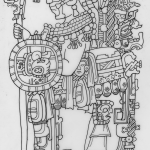
Dos Pilas Stela 17
Maya sculpture that was looted and partially recovered; some portions remain missing.
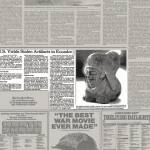
Ecuadorian Artefacts Seized in Miami in 1986
The trafficker, who planned on buying weapons with the proceeds from sale of the artefacts, was convicted of US customs violations after he was denounced by a confidential informant...

Egypt 2011
Egypt’s rich archaeological heritage has always struggled with the impact of the ‘illicit antiquities trade and illicit excavation’ (Shyllon 2011: 136). The uprisings of 2011 exacerbated this problem.
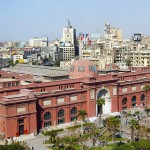
Egyptian Museum in Cairo – Thefts and Recoveries in 2011
The Egyptian Museum in Cairo found itself in the centre of the 2011 Egyptian uprisings (the wider impact of which for Egypt is discussed in a separate entry), in part due to its location on Tahrir Square, upon which much of the protesting focussed (Anderson 2011). On 28 January 2011, despite apparent attempts to protect the museum and its contents (Butler 2011; El-Aref 2011a), looters and...
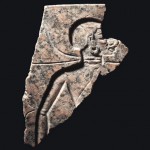
Egyptian objects sold at Bonhams and Christie’s London in 2013
Material stolen from Egypt and sold through Christie’s and Bonhams in London.
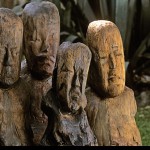
El Manatí Wooden Olmec Busts
A collection of small Olmec figural carvings found in a single archaeological context. Busts of this style have been seen on the art market and have been seized from the collection of dealer Leonardo Patterson. Some questions have been raised around issues of authenticity.
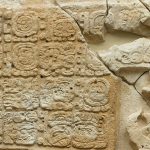
El Perú-Waka’ Stela Fragment Returned to Guatemala in 1999
Maya sculpture stolen from a Guatemalan site and recovered from Sotheby’s auction house...
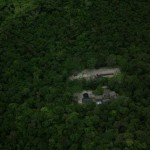
El Zotz
Classic Maya city heavily looted in the 1960s and 1970s.
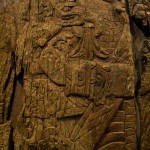
El Zotz Lintel 1
Classic Maya carved wooden lintel looted from the site of El Zotz, Guatemala, in the late 1960s and repatriated from the collection of the Denver Art Museum in 1998.
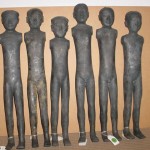
Empress Dou Figurines
Figurines stolen from Tomb of Empress Dou returned to China by Sotheby’s in 2003.
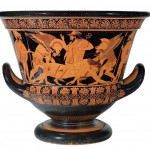
Euphronios (Sarpedon) Krater
The Euphronios (Sarpedon) krater is a red-figure calyx krater made in Athens circa 515 BC, signed by Euxitheos as potter and Euphronios as painter. It was bought by the Metropolitan Museum of Art in 1972 for the then record-breaking price of $1 million, and is now thought to have been excavated illegally in Italy in 1971. In 2006, the Metropolitan restored ownership of the krater to Italy.
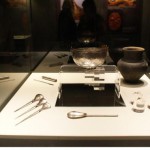
Everbeek Roman Silver Hoard
The third-century Roman silver hoard from Everbeek is one of the most high-profile archaeological finds of recent years in Flanders and it has contributed to the political debate surrounding amateur metal detection.
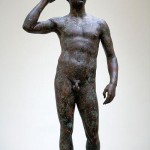
Fano Bronze
The Fano Bronze is a bronze statue currently owned by the J. Paul Getty Museum (Victorious Youth, 77.AB.30) but subject to an Italian claim for repatriation.
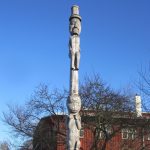
G’psgolox Totem Pole
A First Nations totem pole which was removed from Canada under controversial circumstances and eventually repatriated from Sweden. It is the first Canadian totem pole repatriated from Europe.
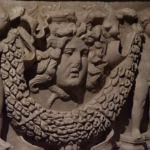
Garland Sarcophagus
Second century Roman piece looted from Turkey and returned in a deal that included a tax write off for the buyer.
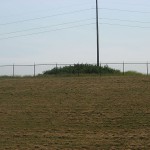
GE Mound
A Hopewell burial mound located on private property in Indiana that was illegally looted by road construction workers in 1988 and 1989.
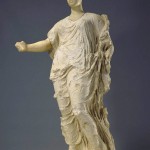
Getty Aphrodite
The Getty Aphrodite is a large (about 2.3 m tall) limestone and marble statue of a female deity, probably Aphrodite, Hera or Demeter, dating from 425–400 BC. It was acquired by the J. Paul Getty Museum in 1988 and returned to Italy in 2007.
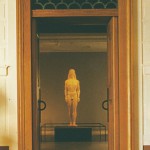
Getty Kouros
The Getty kouros (youth) is a 2 m high marble statue owned by the J. Paul Getty Museum (85.AA.40), appearing to date from sixth-century Greece, though believed by many authorities to be a modern forgery.
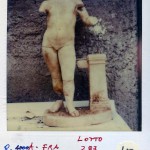
Giacomo Medici
Giacomo Medici is an Italian antiquities dealer who was convicted in 2005 of receiving stolen goods, illegal export of goods, and conspiracy to traffic.
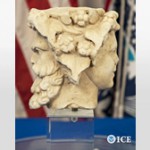
Gianfranco Becchina
Gianfranco Becchina is an Italian antiquities dealer who has been convicted in Italy of illegally dealing in antiquities.
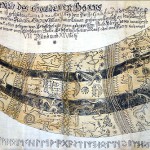
Golden Horns of Gallehus
The original Golden Horns of Gallehus, unique Bronze Age artefacts, were stolen and melted down in 1802, causing national uproar in Denmark and even inspiring a famous poem. In 2007, the replicas of the originals were also stolen.
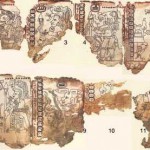
Grolier Codex
A Maya codex of questionable authenticity that appeared on the market in 1971.

HMS Duke of Albany
HMS Duke of Albany is a military vessel that was sunk during the First World War.
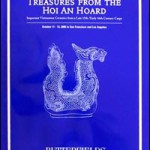
Hoi An Shipwreck
In 1997, following the arrest in Vietnam of two Japanese dealers attempting to illegally export antique ceramics, a license was granted by the Vietnamese government to a commercial salvage company to excavate the Hoi An (Cu Lao Cham) shipwreck. The subsequent auction of finds from the wreck was largely unsuccessful.
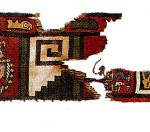
Huaca Malena
Peruvian site, the location of a major cemetery of the Wari culture that was heavily looted for textiles in the 1980s and 1990s.
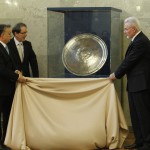
Hungarian claim on the Sevso Treasure
The strongest claim to ownership of the collection of Late Roman silver known as the Sevso Treasure has been maintained by Hungary.

Incirlik smuggling network, Turkey (1998)
In 1997, a smuggling ring based in Incirlik Air Base supplying Turkish artefacts to the United States was broken up.
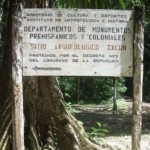
Ixkun Stela 5
In 1972 looters heated this Maya monument and doused it in water, causing it to break into easily-transportable fragments.

J Paul Getty Museum Returns to Italy (1999)
On 5 February 1999, the J. Paul Getty Museum returned three artifacts to Italy after being informed that they had been stolen or illegally excavated.
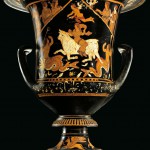
J Paul Getty Museum Returns to Italy (2005)
The J. Paul Getty Museum returned three objects to Italy in 2005 that were stolen or illegally exported.
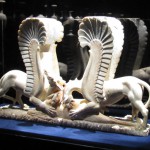
J Paul Getty Museum Returns to Italy (2007)
Artefacts returned to Italy in 2007 after Italian investigations into illicit trading.
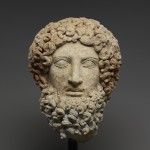
J Paul Getty Returns to Italy (2013)
The Getty Museum returned a looted terracotta head of Hades to Italy.
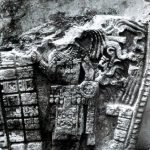
Jimbal Stela 1
Mutilated and partially-stolen Maya sculpture used as an illustration on an ICOM Red List The Maya site of Jimbal is located in Guatemala’s Petén department approximately 14 kilometres north of the core of Tikal (Fry and Cox 1974), halfway between the sites of Tikal and Uaxactun (Robertson 2013: 15). It was likely a satellite of Tikal. To date, archaeologists have recorded one carved...
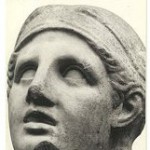
Jiri Frel
Jiri Frel was curator of antiquities at the J.Paul Getty Museum between 1973 and 1984, and was associated with several irregularities regarding museum acquisitions.
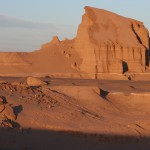
Jiroft
In 2001 a rich tomb was systematically looted at the Iranian site of Jiroft. Artefacts from this looting were trafficked out of Iran and several individuals involved were sentenced to death.
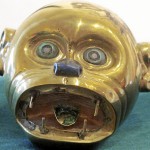
John Bourne Collection
Collection of Pre-Conquest metal objects, some of which were purchased in the United States in 1987 and were later identified as being from the site of Sipán, Peru.
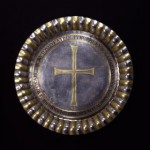
Kumluca Silver
The Kumluca Silver is a collection of more than forty sixth-century AD Byzantine silver artefacts, thought to have been found close to the small town of Kumluca in southern Turkey, and bought by Dumbarton Oaks in 1963.
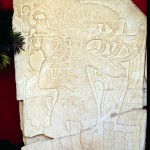
La Amelia Stela 1
A classic Maya stela, cut into pieces for transport, which ended up in the collection of Sweden’s National Museum. It was returned to Guatemala in 1994.
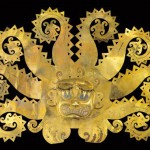
La Mina
A Moche funerary site in Northern Peru that was looted for spectacular gold objects during the same looting wave that hit following the discovery of the famous lord of Sipán tomb.
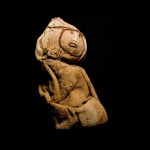
Laguna de los Condores
Remote Peruvian funerary site where numerous mummies were mutilated by incidental looters looking for sellable metal objects.
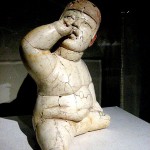
Las Bocas-style Figurines
A popular style of Olmec figurine said to be from the Mexican site of Las Bocas that was defined entirely by looted material that appeared on the art market.
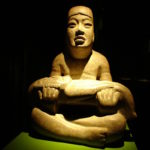
Las Limas Monument 1
Well-known Olmec greenstone statue stolen from a Mexican museum and abandoned in a Texas hotel room after traffickers were unable to sell it.
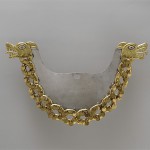
Loma Negra
A Moche or Vicús cultural site that was heavily looted in the 1960s and 1970s for metal objects, many of which are now in the Metropolitan Museum of Art, New York.
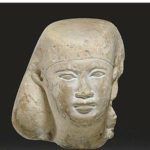
Long Island University Hillwood Museum theft
Egyptian artefacts stolen from Hillwood Museum and sold at Christie’s...
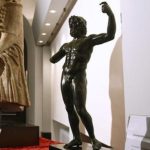
Lysippan Zeus
A small bronze statue of Zeus stolen from Rome’s National Museum of Italy in 1980 was sold at Sotheby’s New York on 9 December 2004.
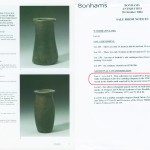
Ma’adi
In 2008, a US army helicopter pilot pled guilty to possessing and selling antiquities stolen from an Egyptian storeroom that had been excavated from the site of Ma’adi.
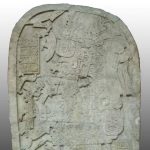
Machaquilá Stela 2
Maya sculpture looted from Guatemala and smuggled into the U.S. resulting in a ground-breaking court decision.

Maithuna from Atru
Two 9th/10th century reliefs stolen from a temple in Rajasthan in 2009 and returned from the United States in early 2014.
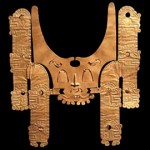
Malagana
Site of a massive looting incident which may have yielded over 200 kg of Colombian gold artifacts in 1992/1993.
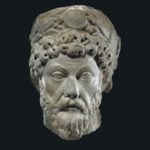
Marcus Aurelius head
Marble head stolen from Algerian museum recovered from Christie’s New York in 2004.

Marion True
Marion True was Curator of Antiquities at the J.Paul Getty Museum in Los Angeles from 1986 until 2005. She was charged and tried in both Italy and Greece on offences related to antiquities smuggling, but never convicted.

Maya ‘Fresco’ Fake
Antiquities dealer Leonardo Patterson convicted of federal wire fraud for attempting to sell a fake Maya ‘fresco’
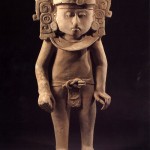
Maya antiquities sold at Sotheby’s in 1995
Two pre-Columbian antiquities offered for sale by Sotheby’s New York in 1994, were later found in photographs taken by an admitted artifact looter and smuggler.
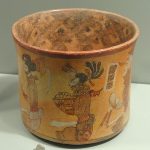
Maya Ceramic Vessels Abandoned in a Florida Airport in 1983
Fifty-five Maya-style vessels that were flown into the USA on a private plane and that no one claimed.

Maya Sculpture Seized in Brooklyn in 1999
Large Ancient Maya pieced seized from a Brooklyn residential garage...
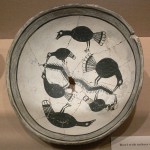
Mimbres Pottery
Distinctive pottery style from the south western United States; all known Mimbres cultural sites have been looted.
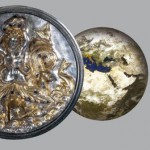
Morgantina Silver
A silver hoard removed from the Sicilian site of Morgantina by looters around in 1979/80 which was eventually purchased by the Metropolitan Museum of Art.

Mosaic Maya Mask
Mosaic stone mask said to have been looted from a Mexican cave and now in the collection of Dumbarton Oaks.
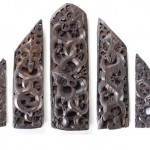
Motunui Panels
Five elaborately carved panels that were smuggled, sold, (almost) used to pay a kidnapping ransom, subject to a landmark court case, and were returned to New Zealand in 2014.
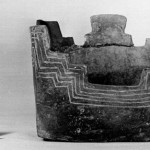
Moundville Archaeological Repository Theft
Organized theft of over 250 archaeologically-excavated artefacts from a repository in Alabama.
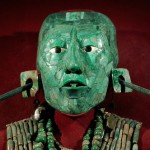
Museo Nacional de Antropología Theft
Museum theft at Mexico’s national museum which resulted in the loss of several of the country’s most famous artefacts. These artefacts were later recovered.
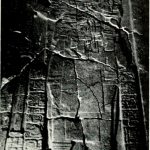
Naranjo Stela 30
Stolen Maya sculpture seized by US Authorities when a crate carrying it broke open in the port of Houston Naranjo is a Maya site located near Guatemala’s border with Belize. It is 18 km north of the town of Melchor de Mencos via a logging road built in the 1950s (Peabody Museum n.d.). Naranjo was discovered in 1905 by Teobert Maler, who recorded 32 stela at the site, including Naranjo Stela 30...
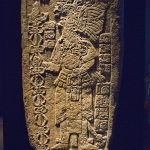
Naranjo Stela 8
Maya sculpture trafficked to the USA, bought by a department store magnate, and physically returned to Guatemala in 2015. Naranjo is a Maya site located near Guatemala’s border with Belize. It is 18 km north of the town of Melchor de Mencos via a logging road built in the 1950s (Peabody Museum n.d.). Naranjo was discovered in 1905 by Teobert Maler, who recorded 32 stela at the site, including...
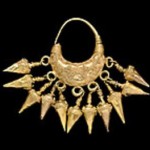
Nimrud Earrings
In 2010 Christie’s New York returned a pair of Neo-Assyrian gold earrings to Iraq.
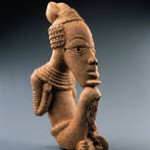
Nok Terracottas
Terracotta figurative sculpture found on the Bauchi plateau of Nigeria. Heavily looted from the 1970s onwards.
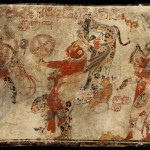
November Collection of Maya Pottery
A spectacular collection of Classic Maya pottery thought to have been systematically looted from Guatemalan sites throughout the 1980s now in the possession of the Museum of Fine Arts, Boston.
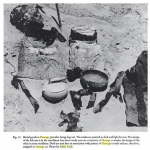
Ocucaje Cemeteries
Nazca and Paracas cemeteries that were looted throughout the 20th century for sellable ancient textiles; aslo the site of a famous class of fake antiquity, the so-called Ica Stones.
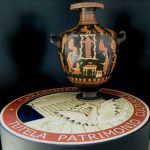
Operation Andromeda
Operation Andromeda was the name given to a police investigation of Japanese antiquities dealer Noriyoshi Horiuchi.
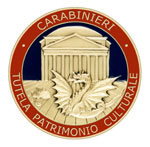
Operation Geryon
Operation Geryon was the name given by Italian Carabinieri to an investigation into the armed theft of eight antiquities from the castle of Melfi.
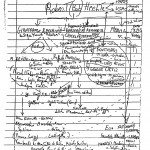
Organigram
The ‘organigram’ is a handwritten organizational chart that was recovered in September 1995 during a Carabinieri raid presenting a view of the antiquities trade within Italy as envisaged in the early 1990s.
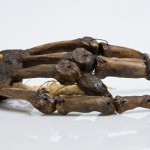
Pangboche Hand
The Pangboche Hand is an alleged Yeti hand, stolen from a Nepali monastery. A finger was stolen in 1958 and smuggled by actor James Stewart and the complete hand was stolen in the early 1990s.
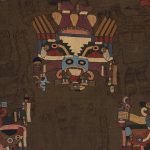
Paracas Mantle returned from National Gallery of Australia
Stolen from Peru’s national museum, the textile was purchased by Australia’s national museum and was returned in 1989 after several years of Peruvian demands.
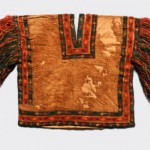
Paracas Textiles
Masterful funerary textiles looted from Peruvian tombs throughout the 20th century, primarily in the 1930s, becoming a staple of the international antiquities market.
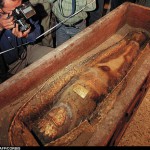
Persian Mummy
The ‘Persian Mummy’ was a recently manufactured mummy recovered by Pakistani police in 2000. It had been made to appear as the dead daughter of the Persian King Xerxes.
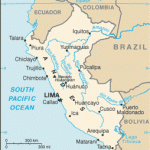
Peru v. Johnson
A civil suit filed against collector Benjamin Johnson in a US Court was ruled in favor of the defendant as the government of Peru could not prove that they were the legal owner of the objects in question.
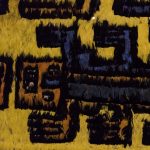
Peruvian Antiquities Seized at Dulles Airport (1981)
Dealer pleaded guilty to falsely declaring the value of freshly-looted Peruvian antiquities that he attempted to bring into the US.
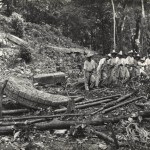
Piedras Negras
During the 1960s a number of archaeologically recorded monuments were looted from the Classic Maya site in Guatemala’s Peten region and trafficked into the United States.
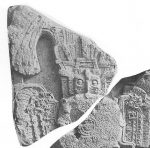
Piedras Negras Stela 9
Maya sculpture that was stolen in the 1960s and reappeared for sale in Paris in 2019.
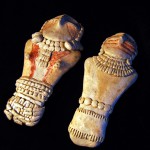
Pilling Collection of Fremont Culture Figurines
A Fremont Culture figurine stolen from the collection of a Utah museum and anonymously returned nearly four decades later.

Placeres Stucco Temple Facade
A large Maya temple decoration that was located in 1968, a rare example of photographic documentation of the looting process.
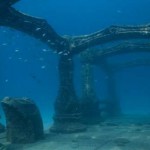
Port Royal
Once a strategically significant port and fort located close to Kingston in Jamaica, Port Royal was largely submerged following an earthquake, which left its underwater remains vulnerable to treasure hunting and commercial salvage.
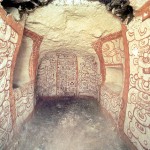
Río Azul
Remote Classic Maya site which was extensively looted in the 1970s for spectacular grave goods.
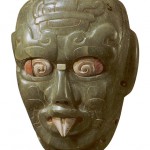
Río Azul Mask
A Classic Maya funerary mask apparently looted from the Guatemalan site of Río Azul and illicitly trafficked into the United States and then Europe.
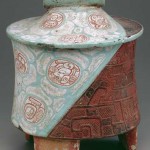
Río Azul Vase
A Classic Maya vase now in the Detroit Institute of Arts that is thought, based on linguistic evidence, to have been looted from Tomb 12 at the Guatemalan site of Río Azul in the late 1970s.

Salisbury Hoard
When a London antiquities dealer offered the British Museum rare Iron Age bronze miniature shields, it triggered the tracing of the origins of a unique and archaeologically significant, but illegally looted, hoard.
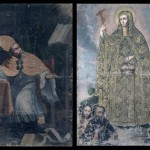
San Andrés de Machaca Church Looting
This remote Bolivian church has been robbed on several occasions; two paintings stolen from it were recovered in London in 2011.
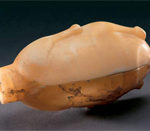
Saqqara Royal Duck Vessels
Two stolen alabaster duck vessels returned to Egypt in 2008, one from Christie’s...

Sevso Treasure
In 1993 a large, unprovenanced silver ‘treasure’ of Roman date was subject to a court battle over ownership in New York.
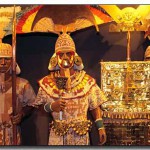
Sipán
One of the best-known cases of archaeological looting; a Moche funerary site that was looted in 1987; the contents of an elite tomb were smuggled out of Peru and into various foreign collections.
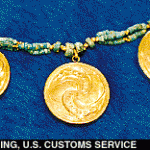
Sipán Jewellery Offered for Sale at Sotheby’s (1994)
Several Peruvian antiquities offered for sale at Sotheby’s Auction House in 1994 that were seized by US Customs under suspicion of having been looted from Sipán.
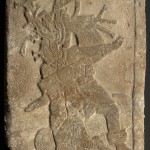
Site Q (La Corona)
For years this site was only known from looted archaeological material for sale on the art market; its location was unknown. It has recently been identified in the Peten region of Guatemala.
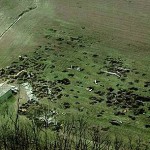
Slack Farm
A Mississippi site in Kentucky where around 650 graves were looted over the course of two months in 1987.

South California Museum Raids (2008)
In January 2008, US federal agents raided the premises of two antiquities dealerships and four art museums in California on suspicion of dealing in and acquiring illegally-exported archaeological artefacts, and enabling a conspiracy to prepare false tax returns.
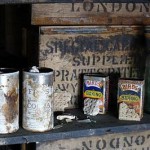
South Pole Exploration Artefacts Taken from Campsites of Robert Falcon Scott
Since the main Antarctic Treaty came into force in 1961, sites associated with the exploration of the continent have been protected. Items stolen from these sites have been subject to voluntary return.

State Hermitage Museum Thefts 2006
In July 2006, the audit of one of the many collection inventories of the State Hermitage Museum, St Petersburg, revealed that over 200 objects had been stolen, with an estimated total value of 130 million rubles ($5 million USD or £2.76 million GBP).
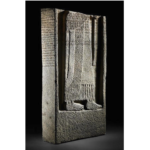
Stele of Adad-nerari III
Syrian stele offered for sale in Christie’s and Bonhams auction houses.

Swetnam, Drew, Kelly Smuggling Ring of Objects from Sipán
The following is one particularly well documented incidence of the trafficking of artefacts from Sipan.
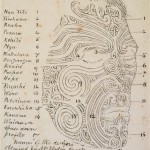
Toi moko
Tattooed and preserved Māori heads, traded primarily in the mid-nineteenth century and the subject of a number of recent repatriation requests.
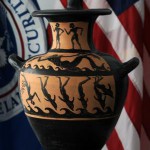
Toledo Museum of Art Return to Italy (2013)
In January 2013 the Toledo Museum of Art returned a piece that was discovered to have been smuggled out of Italy.
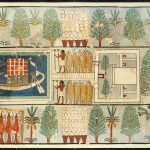
Tomb of Minnakht Wall Paintings
Paintings stolen from an Egyptian tomb and purchased from an Amsterdam dealer by the Museum of Fine Arts, Boston.
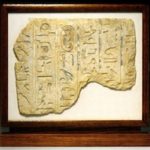
Tomb of Mutirdis Relief Fragment
Stolen Egyptian tomb relief recovered from Bonhams in 2008.
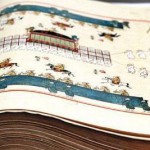
Uigwe
The Uigwe are several thousand historic Korean books which were removed from Korea by the French and then the Japanese during times of occupation and have been subject to successful return requests.

Uma Maheshwar from Nepal
A 12th century Hindu sculpture stolen from Nepal in 1982 and returned from a Berlin museum in 2000.
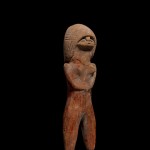
Valdivia Figurines
Extensively looted and faked figurines from sites in Ecuador’s coastal lowlands.
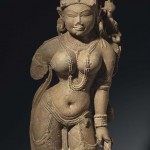
Vaman Ghiya
Indian antiquities dealer accused of selling stolen antiquities through Sotheby’s.
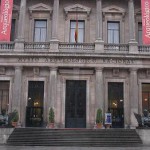
Várez Fisa Collection
Collection of José Luis Várez Fisa donated to the National Archaeological Museum of Spain in 1999.
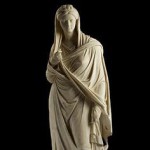
Vibia Sabina Statue
A 2nd century Roman statue looted from Italy, acquired by the Boston Museum of Fine Arts in 1979, and returned to Italy in 2006.
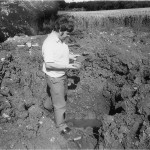
Wanborough
The Romano-British temple site at Wanborough in Surrey, England, was largely unknown and unstudied prior to a remarkable turn of events in the 1980s.
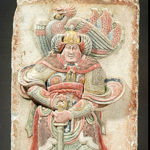
Wang Chuzhi Tomb Panel
Marble relief panel stolen from Chinese tomb in 1994 recovered from Christie’s New York in 2001.
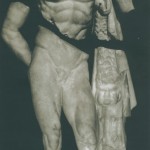
Weary Herakles
A Roman sculpture: the bottom half was archaeologically excavated at the Turkish site of Perge and the top half was looted and eventually placed on display at the Museum of Fine Arts, Boston, USA.
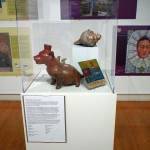
Western Mexican Shaft Tombs
A cultural tradition known for its ceramic figurines, nearly all of which have surfaced as a result of illicit and illegal looting.
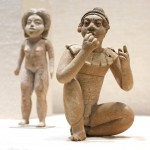
Xochipala-style Figurines
Formative period ‘Mezcala’ figurines from Mexico that are popular on the art market but have never been found in an archaeological excavation.
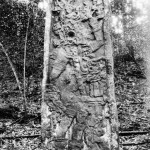
Xultun
A Classic Maya site from which several archaeologically-recorded stelae were looted in the 1970s. Their whereabouts are unknown.
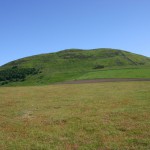
Yeavering Bell
‘A Northumberland National Park Voluntary Ranger patrol discovered the illegal excavations in the central area of Yeavering Bell, the largest hillfort in Northumberland and a scheduled ancient monument’ (Young 2002).
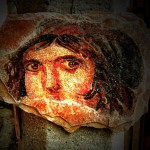
Zeugma Mosaics
The ancient site of Zeugma in Turkey, now partially inundated by a dam, has experienced extensive looting, particuarly for its fine mosaics.
